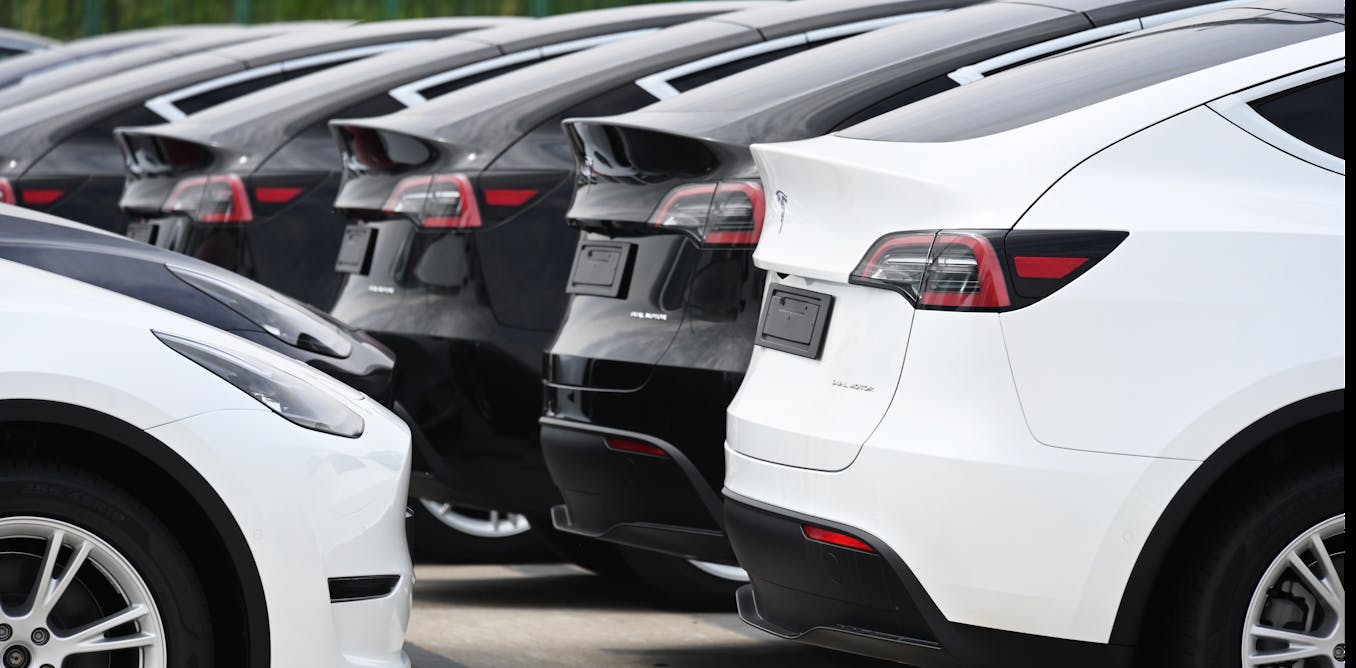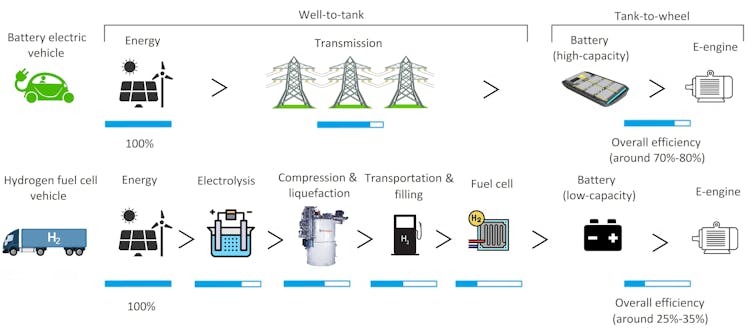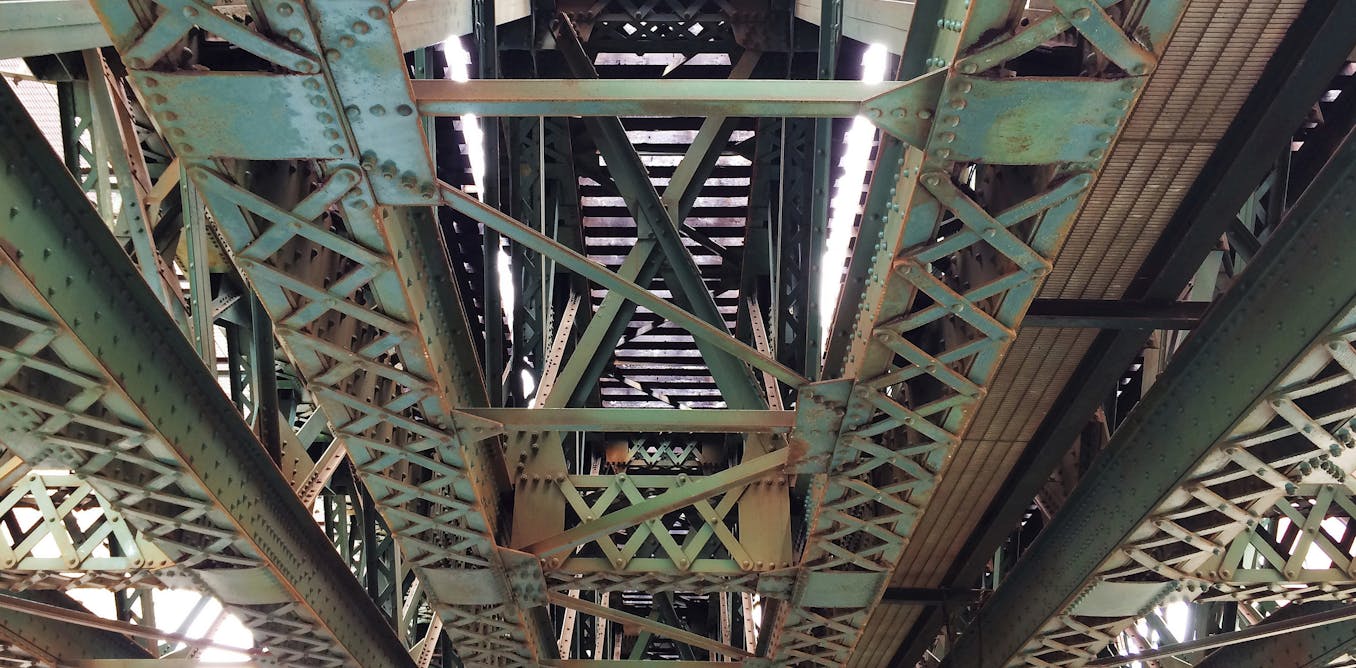President Joe Biden signed a far-reaching weather, power and well being care invoice on Aug. 16, 2022, that invests an extraordinary US$370 billion in power and weather systems over the following 10 years – together with incentives to make bigger renewable power and electrical cars.
Speedy and well-liked adoption of electrical cars might be crucial for the US to fulfill its weather targets. And the new legislation, which incorporates a host of different well being and tax-related provisions, targets to inspire other folks to commerce their gasoline-fueled automobiles for electrics via providing a tax credit score of as much as $7,500 for brand spanking new electrical cars and as much as $4,000 for used electrical cars via 2032.
However there’s a catch, and it would finally end up making it tricky for many EVs to qualify for the brand new incentive.
You’ll concentrate to extra articles from The Dialog, narrated via Noa, right here.
The brand new legislation, referred to as the Inflation Aid Act, calls for that new electrical cars meet stringent sourcing necessities for crucial fabrics, the elements of the battery, and ultimate meeting to qualify for the tax credit. Whilst some automakers, like Tesla and GM, have well-developed home provide chains, no electrical car producer lately meets the entire necessities.
Construction a home EV provide chain
To start with look, the revised EV tax credit look like a good move.
Current U.S. coverage permits credit for the primary 200,000 electrical cars a producer sells. The ones credit helped jump-start call for for EVs. However trade leaders, together with Tesla and GM, have already hit that cap, whilst maximum international automakers’ cars are nonetheless eligible. The legislation removes the cap for person automakers and lengthen the tax credit via 2032 – for any car that meets the sourcing necessities.
At this time, China dominates the worldwide provide chain for fabrics and lithium-ion batteries utilized in electrical cars. That is no coincidence. Because the early 2000s, Chinese language policymakers have followed competitive insurance policies that experience supported complicated battery applied sciences, together with investments in mines, fabrics processing and production. I talk about how China were given a head birth within the race towards a blank power long run in my new ebook, Charged: A Historical past of Batteries and Classes for a Blank Power Long term.
Sen. Joe Manchin, the West Virginia Democrat who stalled previous efforts to get those measures in the course of the sharply divided Senate, mentioned he hopes the necessities will lend a hand scale up the U.S. home crucial minerals provide chain.
The EV incentives would supplement different U.S. insurance policies geared toward jump-starting home EV production capability. The ones come with $7 billion in grants to boost up the improvement of the battery provide chain allotted within the Infrastructure Funding and Jobs Act of 2021 and a $3 billion enlargement of the Complicated Car Production Mortgage Program incorporated within the Inflation Aid Act.
The issue is that the Inflation Aid Act’s sourcing necessities come on-line so briefly, beginning in 2023, and ratchet upward so swiftly, that the plan may backfire. As an alternative of increasing electrical car adoption, the coverage may make nearly all electrical cars ineligible for the tax incentives.
Even Tesla’s Gigafactory is determined by China
The brand new legislation excludes incentives for any new car which comprises battery fabrics or elements extracted, processed, manufactured or assembled via a “international entity of outrage” – a class which incorporates China.
Consistent with Benchmark Intelligence, a marketplace analysis company that tracks the battery trade, China lately controls 81% of world cathode production capability, 91% of world anode capability, and 79% of world lithium-ion battery production capability. By way of comparability, the US has 0.16% of cathode production capability, 0.27% of anode production capability, and 5.5% of lithium-ion battery production capability.
Even the U.S.’s maximum complicated battery factories, comparable to Tesla’s Nevada Gigafactory, lately depend on fabrics processed in China. Regardless of Ford’s plans to make bigger its home provide chain, its most up-to-date offers are for sourcing batteries from Chinese language producer CATL.
Along with except fabrics and elements sourced from China beginning in 2023, the Inflation Aid Act additionally calls for {that a} minimal proportion of the fabrics and elements in batteries be sourced locally or from nations the U.S. has an even commerce settlement with, comparable to Australia and Chile. The edge begins at 40% of the price of crucial minerals in 2023 and ramps as much as 80% in 2027, with equivalent necessities for battery elements.
If a producer doesn’t meet those necessities, its car could be ineligible for the tax credit score. Whether or not the Treasury Division would get a hold of exemptions is still observed.
Even though EV producers are already pursuing plans to expand provide chains that meet those sourcing necessities, proposals for mines and processing amenities steadily face demanding situations. Indigenous and environmental considerations have slowed a proposed lithium mine in Nevada. In some instances, key fabrics, comparable to cobalt and graphite, aren’t readily sourced locally or from fair-trade allies.
Proposed recycling tasks may lend a hand meet call for. Redwood Fabrics tasks its recycling facility, lately below development in Nevada, will provide cathode and anode fabrics to enhance a million electrical cars according to 12 months via 2025. Regardless of such constructive projections, mavens await that recycling can handiest play a small position in offsetting the call for for uncooked fabrics had to scale up electrical car adoption within the coming decade.
How a lot can the legislation do to chop emissions?
Blank power supporters known as the law ancient. Along with an enormous funding in renewable power and electrical cars, it supplies enhance for applied sciences comparable to carbon seize and garage and zero-carbon fuels, and features a price to curtail methane emissions, in addition to some trade-offs that spice up fossil fuels.
Forecasters have projected that the weather bundle as a complete may lend a hand put the U.S. on the right track to cut back greenhouse fuel emissions via about 40% via 2030 in comparison to 2005 ranges – nonetheless wanting the Biden management’s purpose of a 50% aid, however nearer.
However for the U.S. to hit the ones targets, electrical cars should exchange fossil-fueled cars via the tens of millions. A sensible EV tax credit score that permits time for producers to diversify their provide chains and makes those cars extra inexpensive for all American citizens might be a very powerful. The coverage dangers short-circuiting EV tax credit simply when they’re wanted maximum.
This text was once up to date Aug. 16, 2022, with President Biden signing the law.
Supply By way of https://theconversation.com/the-climate-law-could-short-circuit-ev-tax-credits-making-qualifying-for-them-nearly-impossible-188282



